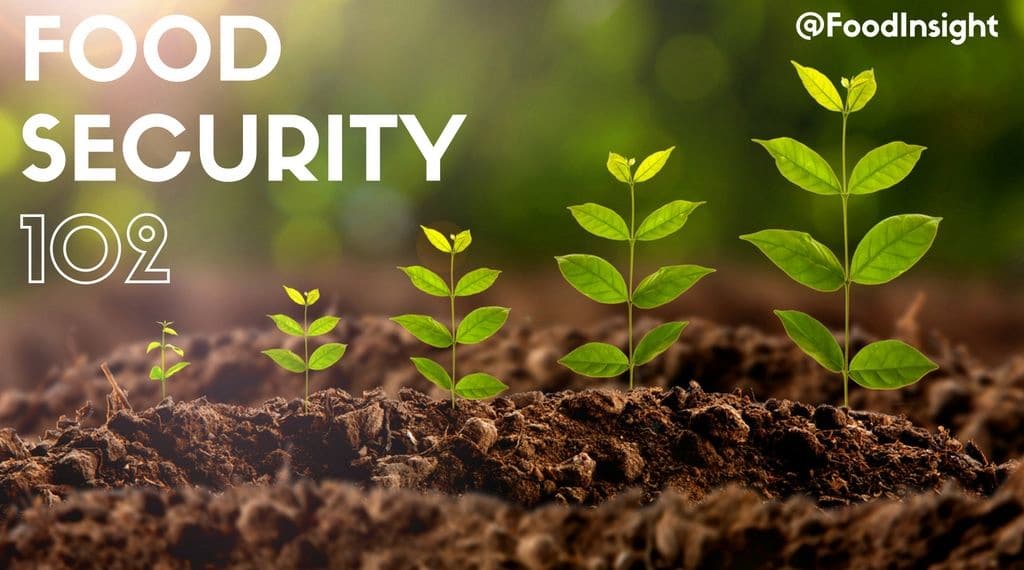The first part of our food security series explained the complexities of this global issue. People are food insecure for many reasons. Populations in war-torn countries often cannot get food in a safe way. Climate change and environmental disasters impact food production. Many just don’t have enough money to feed their families. The World Bank estimates 767 million people live on less than two U.S. dollars a day. So, what are we doing to fight food  insecurity?
insecurity?
FAO
The Food and Agricultural Organization of the United Nations (FAO) is one of the key organizations dedicated to reducing global food insecurity. FAO funds and coordinates food security projects throughout the world. Since 1990 the efforts of the FAO and other global organizations have helped reduce the percentage of undernourished people in developing regions from 23.3 percent to 12.9 percent in 2015. Since 1990, the efforts of the FAO and other global organizations have helped to reduce the number of food insecure people. More than one billion people were considered food insecure in 1990. Today, the number of food insecure people now stands at 797 million. Progress is being made, but there is still a lot to do. Now, the UN and the FAO are dedicated to eradicating hunger by 2030.
Modern Food Technology
Madagascar, natural disasters have caused over $1 billion worth of economic damage, hitting the agricultural sector especially hard. This hit the agricultural sector especially hard. In cases like this, modern food technologies can come to the rescue. The FAO is providing 850,000 people in the worst hit areas with drought-resistant seeds and root crops, such as sweet potato and cassava, to help maintain the food supply. They have set up Farmer Field Schools, teaching the use of climate-smart agriculture and improved post-harvest management.
Similarly, in Zamboanga City in the Philippines, a region affected by ongoing conflict between government forces and rebels, the FAO has worked with the UN Peace Building Fund and the International Labour Organization (ILO), helping those affected by the conflict to recover their means of food production. They have provided fishers and seaweed growers, most of whom are women and young, with seaweed production startup kits and “livelihood training to around 450 seaweed farming and fishing families.”
Food and Nutrition Education
OXFAM estimates nearly 3 million children die each year due to complications brought on by malnutrition. In Cambodia, more than six thousand children under the age of 5 die every year from “maternal malnutrition, underweight and wasting, poor infant feeding practices or micronutrient deficiencies.”
To help fight this problem, the FAO has launched a nutrition-sensitive project intended to diversify the food production of farmers, increase productivity, and improve food and nutritional education. The nutritional education component of the program focused on the feeding, care, and sound food safety practices, such as proper hygiene, for infants and children between 6-18 months of age.
Government Assistance for Low-Income Individuals
On a national basis, governments, state organizations and non-government organizations (NGO) are also addressing food insecurity.
In the United States, the USDA provides food and nutritional help to low-income Americans through the Supplement Nutrition Assistance Program (SNAP). SNAP provides direct assistance to food-insecure people in the U.S. through electronic debit card which can be used to purchase food. It is the largest low-income nutrition assistance program in the U.S., serving more than 46 million low-income Americans in 2012. NGOs provide extra regional help in countries throughout the world, filling in the gaps in services state organizations don’t provide.
In the U.S., one such organization is Feeding America. Feeding America is “the nation’s largest domestic hunger-relief organization.” They work through a network of “200 food banks and 60,000 food pantries and meal programs.” Feeding America helps provide food to one in seven Americans.
In the European Union, 55 million people cannot afford a nutritious meal every day. NGOs such as the European Federation of Food Banks (FEBA), Eurochild, the European AntiPoverty Network, and other organizations help provide food to those in need throughout the EU. FEBA has 265 food banks in 23 countries. It serves 2.9 million meals a day. It is currently working with FoodDrinkEurope and EuroCommerce to encourage food manufacturers and retailers to donate their food surpluses to food banks.
Reducing Food Waste
The FAO estimates that one-third of the food produced each year (approximately 1.3 billion tons) is wasted or lost. All the food that is lost or wasted every year could feed more than twice the nearly 800 million people who are food insecure.
Endeavors are underway to reduce food waste in many developed countries. In Denmark, the WeFood project has opened two stores which sell surplus food, food that is still good but past its expiration date. WeFood is run by the DanChurchACT, a Danish charitable organization which uses the proceeds from WeFood to help fund its efforts to combat famine and food insecurity throughout the world.
Food insecurity remains a significant problem. Poverty still plagues the world, global climate change is having a negative impact on farmers and fishers, and conflict is leaving many people without safe access to food. However, the efforts of the international, national, and local organizations are making progress in reducing food insecurity.
If you are interested in learning more about the myriad of organizations dedicated to fighting food insecurity the International Fund for Agricultural Development developed a map that provides information on NGO efforts and projects.
